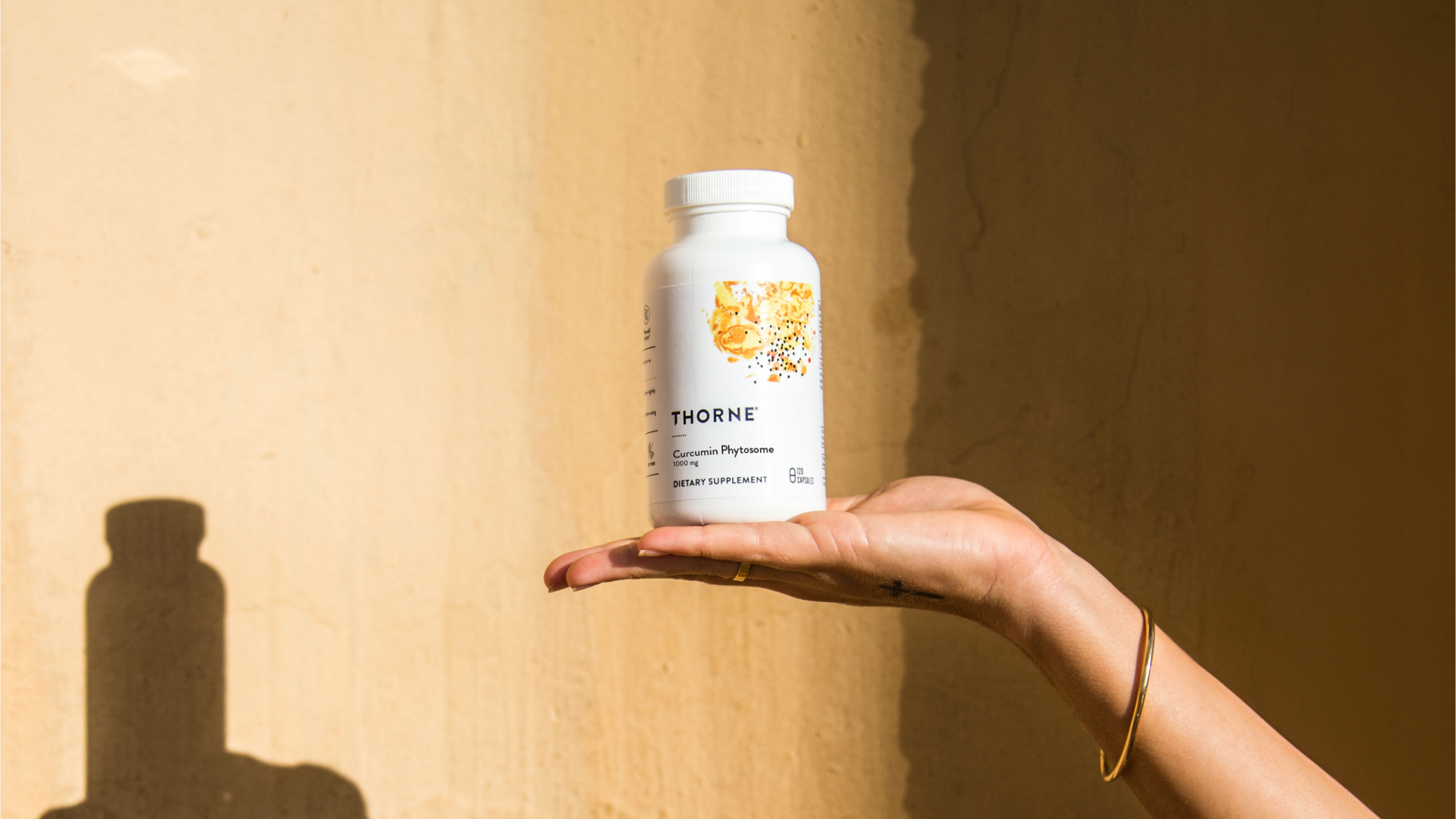The start of a new year is a great time to start anew with healthier habits for a healthier you. If you’ve been following the waves of research published in the sphere of health and wellness, you’ve probably read (more than once) that gut health is central and essential to whole body health. This may have led you to wonder about how to reset your gut.
Effective digestion is only the tip of the iceberg when it comes to the benefits of a healthy gut. The gut-brain axis has now been dubbed the microbiota-gut-brain axis. The new moniker gives credit to not only our bodies, but the species living inside them, for human health.
A healthy microbiome supports healthy weight maintenance, cardiovascular health, a balanced immune system, and even a balanced mood [1-3]. If you have any concerns about the health of your gut community, we’d like to recommend ringing in the new year with our 5R Protocol for Digestive Health.

5R Protocol for Digestive Health
First and foremost, this is not a fast, and a fast is not how to reset your gut. Nor is the protocol a cleanse in the traditional sense. Like a cleanse, the 5R Protocol will support your body’s natural detoxification pathways, and the removal of dysbiotic microbes taking up space in your gut.
What the 5R Protocol does that a cleanse cannot, is set up your newly clean gut with functional nutrition for repair, and probiotics for a thriving microbiome. You can fall right back into poor health as soon as a cleanse is over without completing these important steps.
The 5 R’s are Remove, Replace, Reinocculate, Repair, and Rebalance.
It should be noted that, should you decide to complete the protocol, your practitioner may elect to pair each step with lab testing.
Below, we will give you an overview of why each of these steps is important, and tips on how to reset your gut with the help of a few key supplementary nutrients.
Remove
This is the “detox” step in the protocol. In order to reset your gut, you must first get rid of what you don’t want in there.
Your gut is lined with microbial species, including bacteria and yeast. They can help you digest the food you eat, and in the process create new nutrition that is then absorbed, providing benefits for your body.
Alternatively, an overgrowth of pathogenic species creates indigestion, painful symptoms, inflammation, oxidative stress, and secondary health problems throughout the body and mind [4]. This state of unbalance or overgrowth of unwanted microbes is called dysbiosis.
There is only so much surface area in the gut to which microbes can attach. When too many undesirable species of bacteria and yeast have taken hold of the gut walls, it makes it difficult for good bacteria or “probiotics” to stay and multiply.
Botanical antimicrobial agents can help to eliminate pathogens, leaving room for healthful species to repopulate. Effective plant antimicrobials include barberry, Oregon grape, garlic, black walnut, and olive leaf extracts [5-8].
Caprylic acid, is a fatty acid that has antifungal and antibacterial properties and can support detoxification from pathogens such as Candida yeast, Streptococcus, and Staphylococcus [9].
A few other supplements that support removal and detoxification of the gut would be magnesium citrate and psyllium husk (for regular bowel movements) and a highly bioavailable full-spectrum multivitamin with protein and extra nutritional support for the liver’s detoxification pathways.
Replace
Your microbiome is not solely responsible for digestion. One element of digestive issues is often a lack of the proper enzymes and digestive factors needed to fully break down food. Stress can add to this deficiency, by slowing the secretion of stomach acid and other enzymes [10].
Luckily, there are some nutritional options to replace missing digestive factors and complement the natural food breakdown occurring in the body. A digestive aid taken before a meal can provide a complete spectrum of digestive enzymes.
Commonly, in our years after 60, our bodies produce less stomach acid. This phenomenon, called hypochlorhydria, can lead to digestive discomfort due to incomplete digestion, especially of dietary protein.
Reinnoculate
Once you have ushered out the harmful bacteria from your gut, it’s time to introduce the strains of microbes that provide benefit to your body systems.
While probiotic bacteria can be found in fermented food and drinks, a probiotic supplement provides a more controlled abundance and selection of specific bacterial strains. While beneficial probiotics include Lactobacilli strains acidophilus, plantarum, and salivarius, as well as Bifidobacterium strains breve and lactis, the healthiest guts are diverse.
Depending on the amount of soluble fibre in your diet, you may also benefit from a prebiotic supplement. Prebiotics are specific types of fibre that probiotic species need to survive and thrive in the gut environment.
S. Boulardii is a beneficial yeast that is resistant to antibiotics, stomach acid, and temperature change, and can support the health of your bowels when traveling or using antibiotics. Due to its antifungal properties, it has beneficial effects against Candida yeasts.
In addition, this strain benefits the integrity of both the intestine and the immune system via several different biological mechanisms.
Repair
Healthy gut flora is wonderful, but being able to absorb their benefits is important too. By repairing the health of mucosal cells and the gut lining, you will support healthy secretions and absorption.
While incomplete digestion and improper absorption can create health problems, too much permeability at the mucosal border (called “leaky gut”) is a problem too. Leaky gut can be the result of chronic stress, nutritional insufficiency, xenobiotic exposure, food sensitivities, dysbiosis, infection, and inflammatory bowel disease. Supplementation of specific nutrients can be critical in regenerating the mucosal barrier for proper structure and function.
L-Glutamine is a terrific nutrient for the promotion of mucosal regeneration. It can induce expression of specific genes involved in the growth and differentiation of cells in the small bowel mucosal brush border.
Other nutrients that may support repair include NAC, antioxidants and vitamin D3.
NAC is an antioxidant that supports the integrity and function of intestinal mucosa. Vitamin D3 is a critical nutrient for immune system function and wound healing and contributes to repair of the mucosal lining. Deficiency of this nutrient has been linked to a variety of GI conditions.
Rebalance
Last, but certainly not least, is finding balanced health between your body and mind. Because the gut is so sensitive to stress, reducing stress or finding effective strategies for stress management is key to maintaining a healthy gut. In return, your healthy gut will support a balanced mood.
While emotional work and lifestyle changes are fantastic for removing or reframing stressors, supplemental nutrients and botanical extracts can help mitigate cortisol elevations when new stressors arise. Nutrition can also contribute to healthy levels of neurotransmitter production along the enteric and central nervous systems to keep your mood in balance.
Good Luck! We hope you are having a fantastic start to 2023. Here’s to a healthier You in this new year!
- Liu, Longsha, Jun R. Huh, and Khalid Shah. “Microbiota and the gut-brain-axis: Implications for new therapeutic design in the CNS.” EBioMedicine 77 (2022): 103908.
- Liu, Yen-Wenn, Min-Tze Liong, and Ying-Chieh Tsai. “New perspectives of Lactobacillus plantarum as a probiotic: The gut-heart-brain axis.” Journal of Microbiology 56.9 (2018): 601-613.
- Yoo, Ji Youn, et al. “Gut microbiota and immune system interactions.” Microorganisms 8.10 (2020): 1587.
- Das, Bhabatosh, and G. Balakrish Nair. “Homeostasis and dysbiosis of the gut microbiome in health and disease.” Journal of biosciences 44.5 (2019): 1-8.
- Chung I, Kwon SH, shim ST, Kyung KH (2007). Synergistic antiyeast activity of garlic oil and allyl alcohol derived from alliin in garlic. J Food Sci Nov;72(9): M437-40.
- Shadkchan Y, Shemesh E, Mirelman D, et al (2004). Efficacy of allicin, the reative molecule of garlic, in inhibiting Aspergillus spp. In vitro, and if a murine model of disseminated aspergillosis. J Antimicrob Chemother May;53(5):832-6. Epub 2004 Mar 24.
- Amarowicz R, Dykes, GA, Pegg RB (2008). Antibacterial activity of tannin constituents from Phaseolus vulgaris, Fagoypyrum esculentum, Corylus avallana and Juglans nigra. Fitoterapia Apr;79(3):217-9. Epub 20008 Feb 9
- Sumbul S, ahmad MA, Mohd A, Mohd, A (2011). Role of phenolic compounds in peptic ulcer: an overview. J Pharm Bioallied Sci Jul-sept;3(3): 361-367.
- Nair MK, Joy J, Vasudevan P, et al (2012). Antibacterial effect of caprylic acid and monocaprylin on major bacterial mastitis pathogens. Int J Mol Sci; 13(2):1426-36.
- Megha, Rishi, Umer Farooq, and Peter P. Lopez. “Stress-induced gastritis.” StatPearls [Internet]. StatPearls Publishing, 2022.
Share:
Related Posts

DUTCH Test Enhancements
People take supplements to improve or optimize their health. So what happens when you look at the label, and the ingredient list is filled with

Benefits of Doing Nothing: The Default Mode Network
Quicksilver Scientific Education Team April 20, 2024 Beneath the surface of our daily actions lies a stream of spontaneous thoughts, memories, and emotions. Often, we

Thorne Celebrates 40 Years of Good Health
Maggie Chandler April 12, 2024 As it’s often said at Thorne, healthy ageing is a gift. It’s about embracing the way you feel, your experiences,

Healthy Coffee Alternatives: When to Quit Coffee & What to Drink Instead
Dr Thomas Wnorowski February 16, 2024 Key Points: Does the idea of quitting coffee make you feel all sorts of (terrible) things? It’s common. But

How Your Social Network Impacts Your Mental Health
Austin Ruff April 17, 2024 Humans are inherently social creatures. It’s in our nature to connect and want to be connected to the people around


